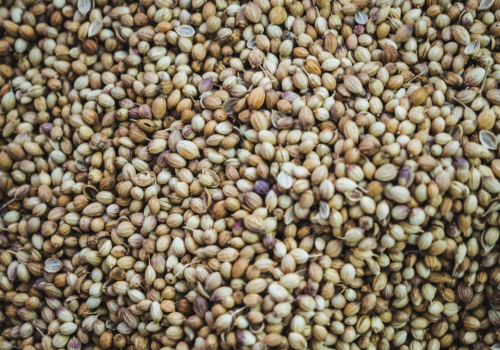MY FAVORITE SPORT IS WATCHING WOMEN WIN IN LIFE
SOOTHE THOSE ACHING JOINTS WITH SMART LIFESTYLE CHOICES
A collective boo to the hormone shifts caused by menopause. It’s this muddle that creates a cascading impact that’s felt by women in all sorts of different ways, often unique to each woman. Painful symptoms are just one of these significant changes, ranging from migraine headaches to breast tenderness.
If we’re honest, these many, varied symptoms can pop up during perimenopause and menopause. Let’s face it, that can be a large chunk of years. And when we talk about pain, joint pain is one symptom that affects many women and can be extremely impactful. For women looking to support their achy joints during this transition, we’ve put together our favorite tips, including the encouraging supports offered by CBD for menopause joint pain.
What Causes Menopause Joint Pain?
Let’s talk hormones! If we break it down, there are a couple of big contributing factors that cause menopause joint pain:
- Estrogen changes: Who knew, but when estrogen drops during perimenopause it can cause inflammation among the joints. Your estrogen receptors are located throughout the joints, and estrogen offers all-important protective and anti-inflammatory properties. As the change hits, this is diminished as your hormones flux.
- Osteoporosis: Double whammy, but as estrogen levels decrease it can also lead to bone density loss. That means that menopausal women are at a higher risk for osteoporosis. While that’s going on, estrogen fluctuations can increase joint inflammation, meaning women can also experience menopause-related osteoarthritis.
All this talk might leave you feeling older than your years, but know that this is common, and the effects of perimenopause and menopause can impact women within a fairly broad age range. Also, you don’t have to sit back and wait for the ache to hit your joints. There are some great lifestyle supports for you to grab onto.
These include simple and powerful actions like maintaining a healthy weight to prevent unnecessary tension on your joints. Others include reducing your stress levels which can often exacerbate joint pain, getting enough quality sleep to minimize daily experienced pain, and improving your body strength and posture for optimal joint function. In short, this is all about reaching for exercise and lifestyle habits that boost flexibility and bust stress.
Here are just some of the activities you can try to do to maintain your weight, soothe stress, and stay supple:
- Brisk walking – Aerobic exercises like walking or swimming, biking, or jogging can help you to lose weight. Experts recommend building up slowly, especially if you’re new to the sport, with 10-minute bursts to build intensity and resistance.
- Strength training – Another way to shed pounds and tone your muscles, activities like weight training can give your body the boost it needs, as well as burn off the stress accumulated during the day.
- Stretching – Many of us lead a sedentary lifestyle. Hours sat in front of computers during the day and sitting on the couch in the evenings can all wreak havoc on our joints. But a few minutes dedicated to stretching twice a day can make all the difference. Find the spots that are particularly stiff and use targeted stretches to work the tension out. Just remember this isn’t a flexibility contest! Go with your limits and stretch in a way that feels good and doesn’t put your joints under strain.
- Tai chi – Balancing exercises like tai chi allow us to practice mindful movements that work both body and mind. It’s the ultimate tool for finding some headspace during a busy day, and at the same time, you’ll be improving your flexibility gently.
- Yoga – Long hailed as the perfect way to lengthen and strengthen your muscles, yoga is a powerful and proven way to help manage chronic pain and improve joint flexibility. Just like your stretching, note this isn’t about being the bendiest! Work within your limits always to avoid injury, find the type of yoga that feels best (there are many types to explore), and if you need to use aids such as blocks or cushions to help with a pose, go for it.
- Pilates – With similar benefits to yoga, Pilates offers a slightly different way to work out. With a focus on core strength, it’s often used as a low-impact exercise to help people recover from injuries. It also helps to improve your posture and flexibility and has been cited as a good intervention for menopausal women.
We’ve got the lifestyle part nailed now, so what about pain relief in tablet form? We recommend avoiding NSAIDs and other over-the-counter anti-inflammatory medications unless absolutely needed. The reason? Well, these medications have adverse side effects and an underestimated rate of liver toxicity when used long-term, which is a negative impact we want to avoid.
For those of you interested in including anti-inflammatory foods in your diet for a natural alternative, like turmeric, be aware of oxalate poisoning. Certain individuals are more susceptible than others and this can actually worsen their joint pain and other symptoms when consuming a high-oxalate diet. If you want to explore this option, the best way to determine if oxalates are making your menopause joint pain worse is by eating a low-oxalate diet first. Then keep track of how you feel to see if your symptoms improve.
While more research is required to make conclusive statements about CBD for menopause joint pain, CBD has been celebrated for arthritis relief and joint support. Both topical CBD and ingestible CBD may offer effective anti-inflammatory properties for reducing joint swelling and inflammation caused by estrogen changes during menopause. CBD also has renowned pain relief potential for addressing painful joints commonly experienced throughout the body and even in old, recovered injuries.
Tip: Try applying our Restore Deep Relief Cream directly to impacted joints for immediate relief.
Scientists are also exploring CBD’s therapeutic role in osteoporosis due to preliminary evidence that it may be able to improve bone health and reduce osteoclast activity which are cells that degrade bone. Since CBD may be able to help improve fracture healing rates by enhancing bone mineralization and maturation of the collagenous matrix, it may offer overall support for bone and joint health.
Tip: Try taking our Glow Full-Spectrum Capsules for daily maintenance and overall joint support.
CBD may also offer additional support for stress management and better quality sleep. Improving these two factors may in turn help alleviate menopause joint pain. CBD is celebrated for stress and pain relief, helping minimize symptoms that can also impact restful sleep. For those looking to incorporate a more consistent exercise routine but are impacted by joint pain, CBD may offer a natural alternative for addressing pain and inflammation.
Tip: Try soaking with our Indulgent Bath Salts and enjoying our Harmonizing Bloom Tea for incorporating other lifestyle practices that help with joint pain.
First off, if you’re currently taking any medication, make sure to speak to your healthcare provider before trying CBD for menopause. CBD can pose certain drug interactions, so it’s critical to talk to your doctor first. The good news is that both topical and ingestible CBD can be used to address menopausal joint pain. But as with any new supplementation, we recommend introducing one at a time gradually and allowing sufficient time to see if you notice any benefits.
Press Pause CBD for Menopause Joint Pain
As women, we understand the far-reaching symptoms that menopause can cause and how impactful this transition can be. That’s why we’ve developed our specialty women’s wellness products for helping support hormonal changes and the symptoms experienced. We’re always happy to help you find the right products needed for your unique challenges during this time, so just reach out to us if you need to. Shop our menopause products or contact us any time for more information!







